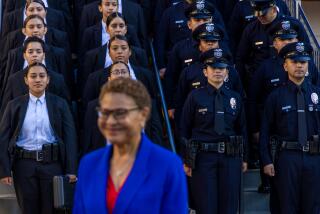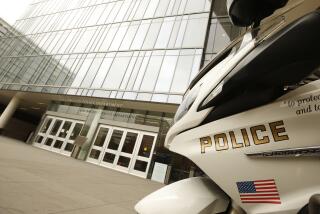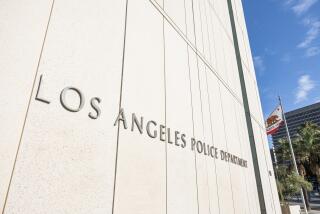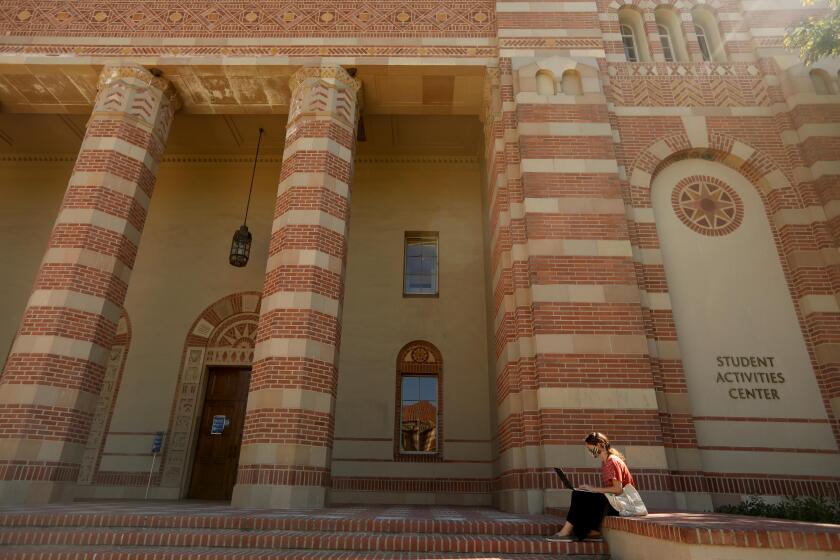The ‘Rampart Way’: Macho, Insubordinate and Cliquish
- Share via
They called it the “Rampart way,” a cocky, swaggering attitude among anti-gang officers who felt they were above department rules. “We do things differently here,” the officers would tell those who dared to question their hard-charging brand of policing.
Such a mind-set, coupled with poor management and supervision, significantly contributed to a lawless environment at the Rampart Division and helped set the stage for the worst police corruption scandal in the city’s history, according to a Los Angeles Police Department report to be released today.
“Though not unique, this type of mentality was significantly more pronounced and pervasive at Rampart than in other divisions,” the LAPD’s Board of Inquiry report states. “The inquiry uncovered ample evidence that Rampart CRASH [anti-gang unit] had developed its own culture and operated as an entity unto itself. It routinely made up its own rules and, for all intents and purposes, was left to function with little or no oversight.”
What resulted there, the board found, was a breakdown of integrity and competence at all levels.
Wider Problems
Despite the focus on Rampart, the inquiry found disturbing similarities at other divisions throughout the department: shoddy work product, inadequate supervision and poor understanding of LAPD rules and policies.
Such departmental shortcomings have LAPD brass concerned that criminal activity by police could extend beyond Rampart.
“It’s a concern,” said Chief Bernard C. Parks, “but until we validate it, we’re going to shy away from saying it.”
As part of the LAPD’s comprehensive look at the administrative and operational failures that allowed corruption to flourish, department investigators painstakingly dissected the blunders at Rampart, which they dated back at least to the mid-1980s and to an incident known throughout the department as the “Easter massacre.”
The Easter massacre was actually a mass transfer of officers out of the Rampart Division who were involved in a number of use-of-force incidents and failed to report them. The reason the officers didn’t report the incidents, officials chillingly recalled from those days, was because “they were too busy to do things right.”
“That attitude was supported by many of their supervisors at the time and, unfortunately, many of the command’s management team as well,” the report states. “Unfortunately . . . this pattern has occurred within Rampart once again.”
The Rampart Division, which patrols about eight square miles west of downtown, is one of the busiest in the LAPD. For many years in the late 1980s and early 1990s, the division led the department in number of homicides, violent crimes and drug dealing. The gang problem in the surrounding neighborhoods was notoriously out of control.
To combat the crime, the station’s anti-gang Community Resources Against Street Hoodlums unit played an increasingly aggressive role. The members of the unit were commonly known to be among the more active officers in the department, ones who wouldn’t be intimidated by the gangs.
“Rampart had created a culture in which its officers believed they were engaged in a life and death struggle with the gang element of Rampart,” the inquiry found.
An “us versus them” attitude festered within Rampart. At one police facility, there was a picture on the wall of a castle with the ramparts tumbling inward. Officers also adopted a menacing logo of a grinning skull wearing a cowboy hat with the so-called dead man’s poker hand splayed behind it. That insignia was worn on shirts and jackets by CRASH officers.
The unit also was cliquish. New members had to be voted on by other members just to get in. The selection process, the inquiry found, is “little more than a ‘beauty contest’ in which officers whose attitudes and performance are consistent with the unit’s expectations will be selected.”
The tightknit group also resisted those in authority and tended to operate without supervision, the report says.
“A laissez-faire philosophy existed at Rampart when it came to supervisory and management controls,” the report found.
Much of the problem, according to the report, was due to poor leadership. In the early 1990s, just before much of the corruption is alleged to have begun, the two Rampart captains apparently did not like each other. One captain who directly oversaw the CRASH unit in the mid-1990s had a reputation for being weak and ineffective. Some mid-level supervisors, meanwhile, were known as strong-willed and tended to shun the command’s top authority, the inquiry found.
“Few supervisors had any contact [with], let alone any control over, the CRASH unit, unless directly assigned,” the report states.
CRASH Unit Ignored Authority
And CRASH officers seemed to pay little heed to any supervisor who was not from CRASH. Sometimes they lashed out at authority, the report says.
In one incident toward the end of the 1992 riots, a patrol supervisor walked into the station and found the entire CRASH unit with their uniform shirts off, playing cards and working out, when they were expected to be in the field, the report says. The supervisor complained to his superior about the situation. The supervisor was confronted about “tattling on the CRASH officers” and two days later found the tires on his personal vehicle slashed. When he replaced them, they were slashed again.
Another problem that LAPD brass believes contributed to the corruption at Rampart CRASH was the fact that the unit was housed in a building apart from the station. There, arrests and police reports made by the anti-gang officers received little scrutiny. Little oversight was exerted over their work schedules, roll call meetings, use of informants, use of undercover vehicles and many other police functions, the report says.
“The practice of officers printing or signing a sergeant’s name to booking approvals and arrest reports was a particularly glaring illustration of poor CRASH supervision,” the report states.
The “Rampart way” attitude was embraced by the entire division, not just the CRASH officers, the report states.
For example, when a respected instructor from the LAPD’s Metro Division was giving a lecture to officers at the Rampart station one day, the officers were “unreceptive to the instruction because the instructor was not from Rampart.”
“Rampart pride” also meant that probationary officers were supposed to report early to the station to wash the patrol cars for the other officers and check out equipment.
On an issue that has arisen repeatedly in the Rampart scandal, the board was almost sarcastic: “None of the employees interviewed recognized any particular trend toward a code of silence, which is certainly ironic, to say the least, given what we now know regarding events at Rampart.”
More to Read
Sign up for Essential California
The most important California stories and recommendations in your inbox every morning.
You may occasionally receive promotional content from the Los Angeles Times.











